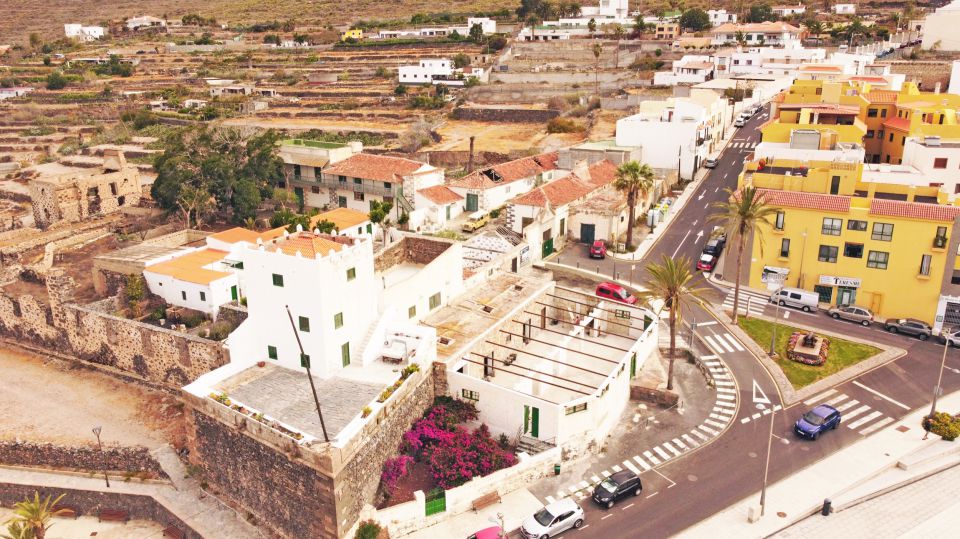
Adeje council have voted today, May 27th to move to begin the process of the expropriation of the Casa Fuerte (Fort House) to rescue the building, given its obvious ruinous state. The Casa Fuerte was declared a ‘Bíen de Interés Cultural by the regional government (an official item of cultural interest) in the ‘Monument’ category in 1986, and is located in the historical centre of Adeje town, beside the Santa Úrsula church.
“This is an historic moment, we owe it to the people and town of Adeje”, said the Adeje mayor, José Miguel Rodríguez Fraga. “The Casa Fuerte is hugely significant symbolically and we have to recover and conserve it for the town”, he said.
The initiative has been taken by the local administration given the state of deterioration of this building, an historical monument in the town, both by the passage of time and the abandonment of parts of the area by the current owners, as well as certain activities in the past, walls falling into disrepair and graffiti evident in other areas.
The technical report prepared for the council underlines the need for urgent action before “the damage will become irreversible” and details numerous defects and damage to the Fort House which, alongside those already mentioned, include fallen roofs, deterioration in walls, disappearance of key decorations and engravings of huge historic and artistic value. Furthermore there appear to have been recent work carried out with inappropriate materials, patch up work that undermine the value of the recognised monument.
The recovery of the Casa Fuerte will be a milestone, when achieved, for the people of Adeje, and very important for the town, not simply for the historical value the area has, but it will also be a part of the development for the resident population. This acquisition is part of the council’s plans for the future of the historic centre of the town, with the Casa Fuerte joining the Plaza de España, the Calla Grande and the new theatre currently being built in the Cultural CentreThe council is also planning to pedestrianize part of the Calle Grande in the near future, with the long term aim being to make the centre of the town pedestrianized for local residents and visitors, bringing the latter to the historic centre of Adeje. The move will make it easier and more attractive for tourists to come to the town, and for local residents too to enjoy the cultural side of Adeje, and should also diversify the local economy and generate job opportunities, creating growth for many in the borough.
Once the council have acquired the Casa Fuerte the planning involves respecting, as much as is possible, the original construction of the fort house, in line with all the approved international guidelines regarding heritage preservation and restoration. Furthermore the council consider that this will be a site of touristic interest.
The council will be initiating the expropriation under the ‘Ley de 16 de diciembre de 1954’, having attempted, on numerous occasions over decades, to reach a friendly accord with the different owners of the building, but without reaching any unanimous agreeme
History
In 1553 Pedro Ponté sought permission to build a fort to defend the area from continuous incursions from pirates who were invading the coast of Adeje. In 1555 he was granted the right to go ahead and built the Casa Fuerte in 1556 which, over the following three centuries, became the political, economic and social centre of Adeje under the Ponte family.
This was a fort residence, a combination of farming mansion and a fortification, with an area of 7,200 m2. There was a castle and tower, storage sheds, granaries, a bakery, a forge, homes for the servants and administrators, a chapel and the principal palace. According to the records, the most important building is an “archive hall” which contained thousands of documents, defined by the historian Viera y Clavijo as “the treasure of the Canaries”.
The Casa Fuerte, now 466 years old, is part of the history of the colonisation of the southwest of Tenerife. The building was the economic centre of the area.